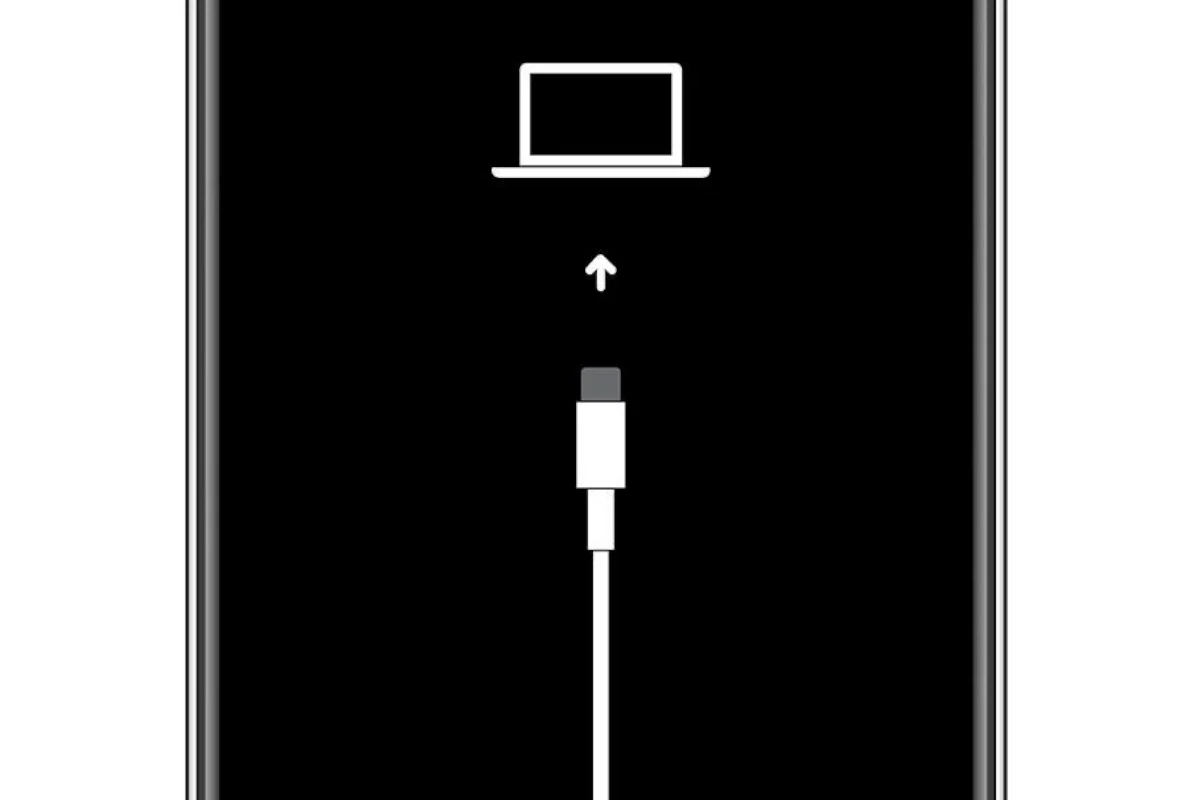The iPhone 16 brings exciting new features, but sometimes you might need to troubleshoot issues. Recovery mode is a useful tool for resolving software problems or updating your device. To enter recovery mode on iPhone 16, press and quickly release the Volume Up button, then the Volume Down button, and finally hold the Side button until the recovery mode screen appears.
Recovery mode helps when your iPhone won’t turn on or update normally. It allows you to restore your device’s software or update to the latest iOS version. This process can fix many issues without losing your data.
Knowing how to use recovery mode is valuable for any iPhone 16 owner. It’s a simple yet powerful method to get your device working again when other solutions fail. Here’s a quick guide to recovery mode options:
| Action | Result |
|---|---|
| Update | Installs latest iOS without erasing data |
| Restore | Erases all data and installs latest iOS |
| Exit | Exits recovery mode without changes |
iPhone 16 Recovery Mode Guide: How to Enter & Exit Safely
If your iPhone 16 is stuck on the Apple logo, frozen during an update, or experiencing other serious software issues, Recovery Mode is a powerful tool to help fix it. This guide walks you through everything you need to know about using Recovery Mode safely on your iPhone 16, including step-by-step instructions, what it does, and when to use it.
🔧 What Is Recovery Mode?
Recovery Mode is a built-in iOS feature that lets your iPhone communicate with a computer via Finder (macOS Catalina or later) or iTunes (on older macOS/Windows). It’s typically used to:
- Reinstall iOS without erasing data (if possible)
- Restore the iPhone if it won’t boot up properly
- Resolve update failures or endless boot loops
🪜 How to Put iPhone 16 Into Recovery Mode
Before you begin:
- Make sure you have a Mac or PC with the latest version of macOS or iTunes.
- Use a USB-C to USB-C or USB-C to USB-A cable to connect your iPhone 16.
Steps:
- Connect your iPhone 16 to your computer.
- Quickly press and release the Volume Up button.
- Quickly press and release the Volume Down button.
- Press and hold the Side button (also called the Power button) until you see the Recovery Mode screen — it shows a Mac or PC and cable icon, not just the Apple logo.
Keep holding even after the Apple logo appears—release only when you see the recovery screen.
🧰 What You Can Do in Recovery Mode
Once in Recovery Mode, your Mac or PC should display the following options:
- Update: Attempts to reinstall iOS without deleting your data.
- Restore: Erases your device and installs the latest version of iOS.
Choose Update first to preserve your data. If that fails, return to Recovery Mode and choose Restore.
🧯 How to Exit Recovery Mode
If you change your mind or no longer need Recovery Mode:
- Disconnect your iPhone from the computer.
- Press and quickly release Volume Up.
- Press and quickly release Volume Down.
- Press and hold the Side button until the Apple logo appears.
This forces your iPhone to reboot normally.
🧠 Tips & Warnings
- Backup your data before using Recovery Mode when possible. Even though “Update” won’t erase data, “Restore” will.
- Don’t unplug the iPhone during an update or restore process.
- Use DFU Mode if Recovery Mode fails. DFU (Device Firmware Update) is a deeper restore method used when Recovery Mode doesn’t solve the issue.
📌 When Should I Use Recovery Mode?
Use Recovery Mode if:
- Your iPhone 16 is stuck on the Apple logo for several minutes.
- You tried to update iOS, but it failed.
- The screen goes black and unresponsive, even after force restarts.
- You forgot your passcode and need to restore access.
If you’re still stuck after trying Recovery Mode, you may need to escalate to Apple Support or visit a certified repair provider.
Understanding Recovery Mode
Recovery Mode is a crucial feature for troubleshooting and fixing serious issues on your iPhone 16. It allows you to update or restore your device when standard methods fail. Let’s explore what Recovery Mode is and when you might need to use it.
Defining Recovery Mode
Recovery Mode is a special state that puts your iPhone 16 in a condition where it can receive a new operating system. It’s a failsafe method to fix software problems that prevent normal function. When in Recovery Mode, your iPhone displays a computer icon with a cable.
To enter Recovery Mode on an iPhone 16, you need to:
- Connect your iPhone to a computer
- Press and quickly release the volume up button
- Press and quickly release the volume down button
- Press and hold the side button until you see the recovery mode screen
Recovery Mode allows you to update or restore your iPhone using iTunes or Finder on a computer.
When to Use Recovery Mode
You should use Recovery Mode in several situations:
- Your iPhone is stuck on the Apple logo for several minutes
- You see a black or blue screen
- Your device won’t turn on or respond
Recovery Mode is also useful when:
- You need to downgrade to a previous iOS version
- Your iPhone is disabled after too many failed passcode attempts
- Regular software updates fail
It’s important to note that the iPhone 16 introduces a new wireless recovery feature. This allows you to restore your device by holding it near another up-to-date iPhone or iPad.
| Recovery Mode Type | Pros | Cons |
|---|---|---|
| Traditional (Wired) | Works with any computer | Requires physical connection |
| Wireless (iPhone 16) | Convenient, no cables needed | Needs another iOS device |
Remember, Recovery Mode should be your last resort after trying a force restart and standard update methods.
Entering Recovery Mode
Recovery Mode is a crucial tool for troubleshooting and resolving software issues on your iPhone 16. The process varies slightly depending on your device model.
Procedure for iPhone 16 Series
To enter Recovery Mode on your iPhone 16, 16 Pro, 16 Plus, or 16 Pro Max:
- Connect your iPhone to a computer using a USB-C cable.
- Press and quickly release the Volume Up button.
- Press and quickly release the Volume Down button.
- Press and hold the Side button until you see the recovery mode screen.
The recovery mode screen shows a computer icon and a cable. Your iPhone is now in Recovery Mode. You can use iTunes or Finder to update or restore your device.
To exit Recovery Mode, press and hold the Side button until your iPhone restarts.
Differences for Older Models
Older iPhone models have a different process for entering Recovery Mode:
- iPhone 8 and SE (2nd generation): Use the same steps as iPhone 16 series.
- iPhone 7: Press and hold the Side and Volume Down buttons together.
- iPhone 6s and earlier: Press and hold the Home and Top (or Side) buttons.
Hold these buttons until you see the recovery mode screen.
| Model | Buttons to Press |
|---|---|
| iPhone 16 Series | Volume Up, Volume Down, Side |
| iPhone 8 & SE (2nd gen) | Volume Up, Volume Down, Side |
| iPhone 7 | Side + Volume Down |
| iPhone 6s and earlier | Home + Top/Side |
Remember, Recovery Mode is useful for fixing software issues, but it may erase your data. Back up your iPhone before using this feature.
Connecting to a Computer
Connecting your iPhone 16 to a computer is essential for entering recovery mode. This process differs slightly between Mac and Windows systems.
Using Finder on Mac
To connect your iPhone 16 to a Mac, use a USB-C to USB-C cable. Plug one end into your iPhone and the other into your Mac’s USB-C port. Open Finder and select your iPhone from the sidebar.
If this is your first time connecting, tap “Trust” on your iPhone and enter your passcode. Your Mac will now recognize your device.
In Finder, you’ll see options to back up, restore, or update your iPhone. To enter recovery mode, follow these steps:
- Press and quickly release the volume up button
- Press and quickly release the volume down button
- Press and hold the side button until the recovery mode screen appears
Your Mac will detect the iPhone in recovery mode and offer update or restore options.
Using iTunes on Windows PC
For Windows users, iTunes is required to connect your iPhone 16. Download and install the latest version of iTunes from Apple’s website if you haven’t already.
Connect your iPhone to your PC using a USB-C to USB cable. Launch iTunes and wait for it to detect your device.
To enter recovery mode on your iPhone 16 while connected to iTunes:
- Quickly press the volume up button
- Quickly press the volume down button
- Press and hold the side button until you see the recovery mode screen
iTunes will recognize your iPhone in recovery mode and provide options to update or restore your device.
| Action | Mac (Finder) | Windows (iTunes) |
|---|---|---|
| Connection | USB-C to USB-C | USB-C to USB |
| Software | Finder | iTunes |
| Trust Process | Tap “Trust” on iPhone | Allow access on PC |
| Recovery Options | Update, Restore | Update, Restore |
Troubleshooting & Support
When issues arise with iPhone 16 recovery mode, quick solutions and expert assistance can get your device back on track. Resolving common errors and accessing Apple’s support channels are crucial steps in troubleshooting.
Resolving Recovery Mode Errors
If your iPhone 16 gets stuck in recovery mode, try these fixes:
Force restart: Press Volume Up, Volume Down, then hold the Side button until the Apple logo appears.
Update iTunes: Ensure you have the latest version on your computer.
Check USB connections: Use an official Apple cable and try different USB ports.
Reinstall iOS: If problems persist, you may need to restore your iPhone through iTunes.
Error codes can indicate specific issues. Common ones include:
- 4013: Usually a connection problem
- 9: Sign out of iCloud and try again
- 14: Update iTunes and restart your computer
Getting Help from Apple Support
When self-help methods fall short, Apple offers various support options:
Apple Support website: Access troubleshooting guides and FAQs.
Apple Support app: Download it on another iOS device for personalized help.
Genius Bar: Book an appointment at your local Apple Store for in-person assistance.
Phone support: Speak with an Apple expert directly.
| Support Option | Best For |
|---|---|
| Website | Quick answers to common issues |
| Support app | Guided solutions on the go |
| Genius Bar | Hardware problems |
| Phone support | Complex software issues |
Remember to back up your data before seeking support. This ensures you don’t lose important information during troubleshooting.
Frequently Asked Questions
Recovery mode on the iPhone 16 can be tricky. Here are answers to common questions about using this feature on Apple’s latest model.
How can I enter recovery mode on my iPhone 16 without using a computer?
You can enter recovery mode on your iPhone 16 without a computer. Press and release the Volume Up button quickly. Then press and release the Volume Down button. Finally, press and hold the Side button until you see the recovery mode screen.
What steps should be taken if iPhone 16 does not enter recovery mode?
If your iPhone 16 won’t enter recovery mode, try a force restart first. Force restart by quickly pressing Volume Up, then Volume Down, then holding the Side button until the Apple logo appears. If this doesn’t work, try connecting to a computer and using iTunes or Finder.
How do you put a disabled iPhone 16 into recovery mode?
To put a disabled iPhone 16 in recovery mode, follow the standard steps. Press Volume Up, then Volume Down, then hold the Side button. Keep holding until you see the recovery mode screen, even if the phone seems unresponsive at first.
Is there a difference in entering recovery mode on the iPhone 16 compared to earlier models like iPhone 14 or iPhone 11?
The process for entering recovery mode on iPhone 16 is the same as iPhone 14 but different from iPhone 11. On iPhone 11 and earlier with Home buttons, you hold the Side and Volume Down buttons together instead of pressing them separately.
What are the reasons an iPhone 16 might fail to enter recovery mode?
Your iPhone 16 might fail to enter recovery mode due to hardware issues, software glitches, or a drained battery. Ensure your device has enough charge. If problems persist, there may be internal damage requiring professional repair.
Can you access iCloud features while your iPhone 16 is in recovery mode?
You cannot access iCloud features in recovery mode. Recovery mode limits your iPhone 16’s functions. It’s designed for restoring or updating your device, not for normal use or accessing cloud services.
| Recovery Mode Action | Purpose | Requires Computer? |
|---|---|---|
| Update iOS | Fix software issues | Yes |
| Restore iPhone | Erase and reinstall iOS | Yes |
| Exit Recovery Mode | Return to normal function | No |







